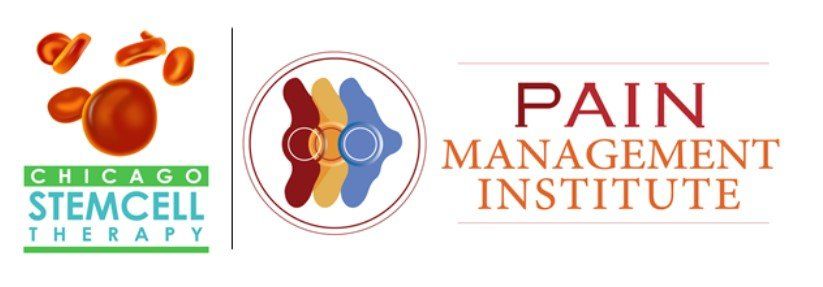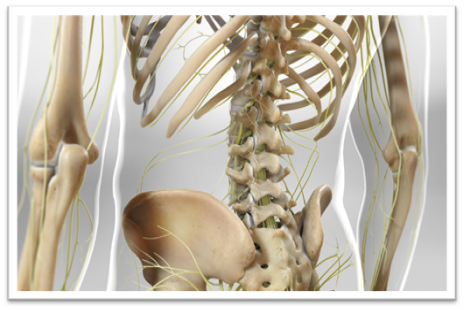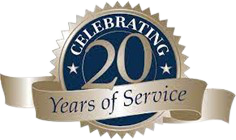Accepting New Patients
Serving the Chicagoland Area

Back & Neck Pain Treatments
Back pain is the leading cause of disability worldwide and affects most people at some point in their life. Bad posture while sitting or standing, bending awkwardly, or lifting incorrectly could trigger pain and lead to a serious condition. From a dull, constant ache to a sudden or sharp stab, back pain can really interfere with simple everyday activities.
Back or neck pain can be treated in many different ways, but first we must thoroughly understand what is causing it. While you might not think your arm or leg pain is being caused by your back, you may actually have a bulging or herniated disc pushing on a nerve, sending pain down your limbs. Once we know the cause of pain, we can look at the treatment options best for you.
Alternatives to surgery:
Many conditions have traditionally been treated with types of surgery, but the minimally invasive procedures offered at Chicago Stem Cell Therapy & Pain Management Institute can be a better option. All procedures are performed as outpatient in our fully equipped Joint Commission Accredited surgical suite on site. Whether Dr. Zaki Anwar performs a more conservative treatment or recommends ground breaking regenerative therapy, you likely have options aside from surgery that requires hospital stay, recovery, and rehabilitation.
Some of these exclusive treatments to the cervical, thoracic, or lumbar spine include:
- Epidural Injection of steroid
- Facet Joint Injection
- Nerve block
- Radiofrequency Ablation
- Spinal Cord Stimulator
- Trigger Point Injection
- Vertebroplasty
You may be a candidate for a regenerative enhancement of PRP (Platelet Rich Plasma), Amniotic fluid, or mesenchymal derived stem cells added to select procedures
Preventative Measures:
Below are the best things you can do to prevent neck or back pain:
- Exercise regularly so that your back and core muscles remain strong
- Maintain a healthy weight to relieve pressure
- Maintain a good posture when sitting by keeping knees and hips level and choosing a chair with armrests and back support
- Maintain a good standing posture by standing tall, avoiding a slouch and alternating your weight between feet when standing for long periods
- Avoid heavy lifting when you can, but when necessary bend with your legs and keep your back straight
- Quit smoking, which increases the risk of low back pain


Back and neck pain conditions that we treat include:
- Arthritis- Spinal arthritis is inflammation of the facet joints in the spine or sacroiliac joints between the spine and the pelvis
- Bulging/Herniated/ Ruptured/ Slipped Disk– A condition that occurs when its jelly-like nucleus pushes against its outer ring due to wear and tear or a sudden injury. This pressure against the outer ring may cause lower back pain.
- Degenerative disk disease– This condition occurs when the cushioning in your spine begins to wear away and is most common in older adults.
- Kyphosis- An exaggerated forward rounding of the upper back often due to weakness in vertebrae that causes them to compress or crack
- Muscle or ligament strain- An injury to the tendons and/or muscles of the lower back, ranging from simple stretching injuries to partial or complete tears in the muscle/tendon combination leading to inflammation and pain
- Radiculopathy/ pinched or compressed nerve- This condition occurs when there is excessive pressure on the nerve roots near the vertebrae in your back causing burning, tingling, or numbness into your arms or legs
- Sciatica -This condition most often occurs when a herniated disk or an overgrowth of bone puts pressure on part of the sciatic nerve, which travels from the lower back through the hips and buttocks and down each leg.
- Scoliosis- A sideways curvature of the spine
- Spinal Stenosis – A condition most commonly in the lower back or neck in which the spinal canal becomes narrow, putting pressure on the spinal cord and nerves that travel through the spine.
- Spondylolisthesis– A condition caused when the vertebrae, or bones, of the spine slip out of place
- Vertebral fractures– Dislocation or fracture of the vertebrae (backbone) and can occur anywhere along the spine. Most spinal fractures are caused from injury or trauma from car accidents, falls, or sports
- Whiplash– Occurs when a person's head moves back and forth very suddenly with great force. This injury is most common following an automobile accident
Anatomy of the Spine
Transforaminal Epidural Injection
Facet Joint Injection
Vertebroplasty
Herniated/ Slipped/ Bulging Disc
Sympathetic Nerve Block
Trigger Point Injection
Radiofrequency
CONTACT INFORMATION
ADDRESS: 10181 W Lincoln Hwy
Frankfort, IL 60423
Se habla español


BUSINESS HOURS
- Mon - Thu
- -
- Friday
- -
- Sat - Sun
- Closed
Private pay and Financing available,
Advance Care Card accepted
Follow or Like us on:
OUR LOCATION